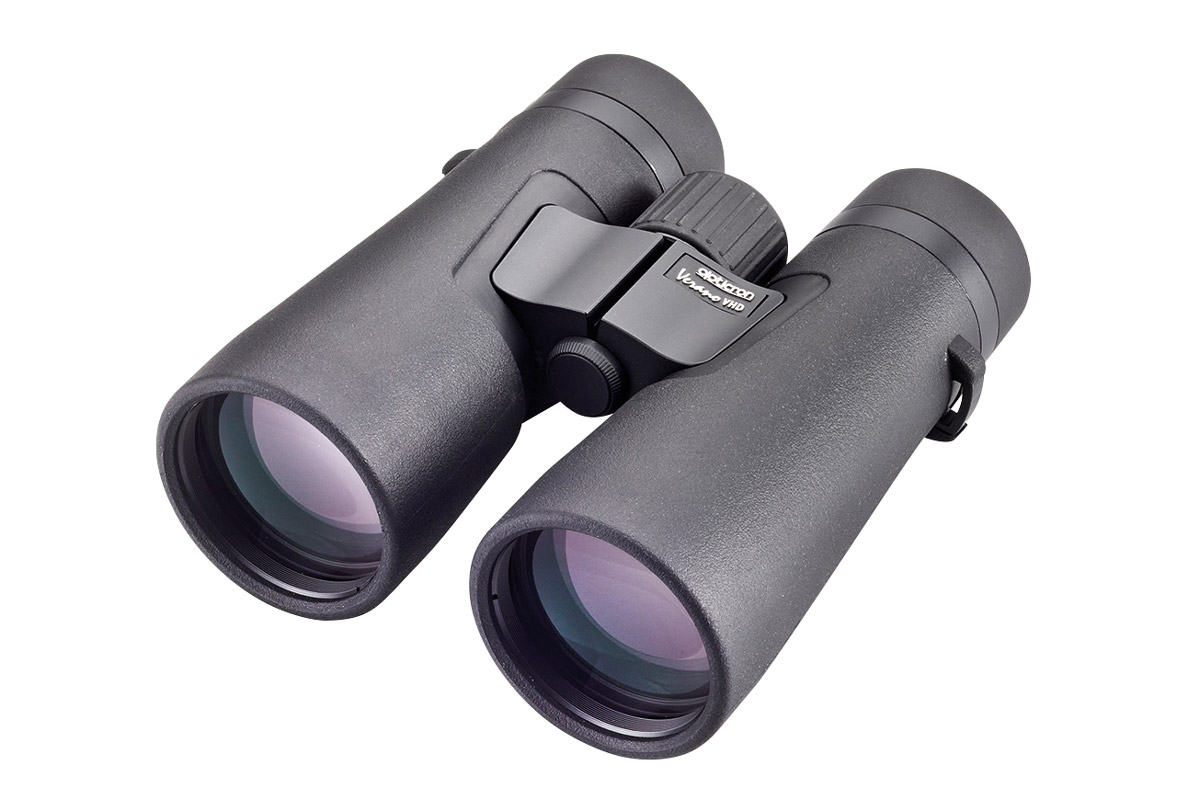Opticron Verano BGA VHD 10x50 binocular
Many birders will remember the era when 50 mm objectives were de rigueur – those large-diameter, light-gathering lenses, combined with a relatively high 10x magnification, meeting many an observer's expectation in the field.
In recent years, though, the trend has been toward the design and production of increasingly compact binoculars, with smaller objectives that strive to effectively punch above their weight. That's all well and good, but it frequently comes with a hike in cost.
With the launch last month of a further addition to its range, it appears that Opticron has taken a fresh look at the conundrum and tackled the problem head on. Enter the Verano BGA VHD 10x50 – a binocular integrating up-to-date technology that sets out to deliver the best of both worlds.
I was very pleased to be able to get my hands on one just after the first shipment arrived from Japan. Without hesitation, I can say it did not disappoint.

Looking first at its physical characteristics, form and function, the body of this new Verano starts off along the compact road from the ocular end, widening markedly within a relatively short distance beyond the fairly narrow hinge to incorporate the 50 mm objectives. With a length of 150 mm, it is no longer than many 42 mm binoculars on the market and, in fact, is shorter, as well as weighing less, than some top-tier 42 mm models from renowned and eminent brands. With its non-slip rubber armour covering, this binocular feels robust, very well constructed and, sitting steady on my fingertip placed under the central hinge, perfectly balanced.
The sturdy alloy eyecups are overlaid with medium-soft rubber, square cut and moderately comfortable against the eye. They twist out, click-locking in two extended positions above the base setting and I was still just able to appreciate the full field of view at maximum extension.
Despite being located just off centre of the broadly milled central focusing wheel, the strap lugs are not overly obtrusive, and I was able to operate the former quite comfortably. Although it was quite stiff to turn initially, it loosened up with continued use. Three full clockwise turns take the image from the close focus distance of 1.5 m to infinity. This is significantly higher than the average number of turns between these two focusing extremes, but in reality, adjusting the focus between approximately 10 m and 500 m is accomplished in less than half a turn.
Dioptre adjustment is carried out via a smoothly twisting ring located on the right ocular. This isn't lockable and lacks a numeric scale, but it doesn't accidentally move from its position once set.
Completing the kit is a generously padded and very comfortable neckstrap, a perfectly fitting, articulated rainguard – which slips on and off wonderfully quickly and easily without disrupting the set position of the eyecups – and the nowadays almost statutory, loop-over, rubber objective covers.
So how does all this gear perform from an optical perspective? Well, when you think about it, in the current era, a 50 mm objective is the same size as those used in mini-scopes so, effectively, the light-gathering capacity is the same, although the magnification remains at 10x. This therefore delivers a brighter image than a 10x magnification binocular with a 42 mm objective, all other things being equal. In this respect, the Verano performed very well, and in direct comparison, in the run up to dusk, it was only a shade behind one of those widely acknowledged top-tier 42 mm models mentioned above. In the same comparison, the only aspect it fell short on was field of view with, at 105 m at 1,000 m, the Verano just scraping 80% of the highest available. Nevertheless, this is still respectable within the current market range for 10x magnification binoculars.
Colours and contrast were impressive, the former rich, natural and accurately reflected, not conveying the overly warm tones which many mid-range models often deliver.
Neither is chromatic aberration (CA) too heavy a problem to contend with. I was lucky enough to find a nice, black, drake Common Scoter well inland on one of my local patches while on my first trip out using this binocular – an ideal CA presenter against light-reflective water – but levels were lower than expected.
The image is sharp almost to the edge and the curvature of field is minimal. Technically, it features a fully multi-coated optical system with phase corrected prisms and 'Oasis' prism coatings.
To sum up, this is an impressive binocular for the money. Spending five times as much at the top end of the market certainly won't deliver anything like five times the performance.
Further info
- Price: £449
- Size: 150x139 mm
- Weight: 810 g
- Field of view: 105 m at 1,000 m
- Light transmission: n/a
- Close focus: 1.5 m
- Gas-filled: yes
- Waterproof: yes
- Guarantee: 30 years
Verdict
+ Excellent light-gathering capacity
+ Rich, natural and accurate colours
- Field of view is somewhat narrow


